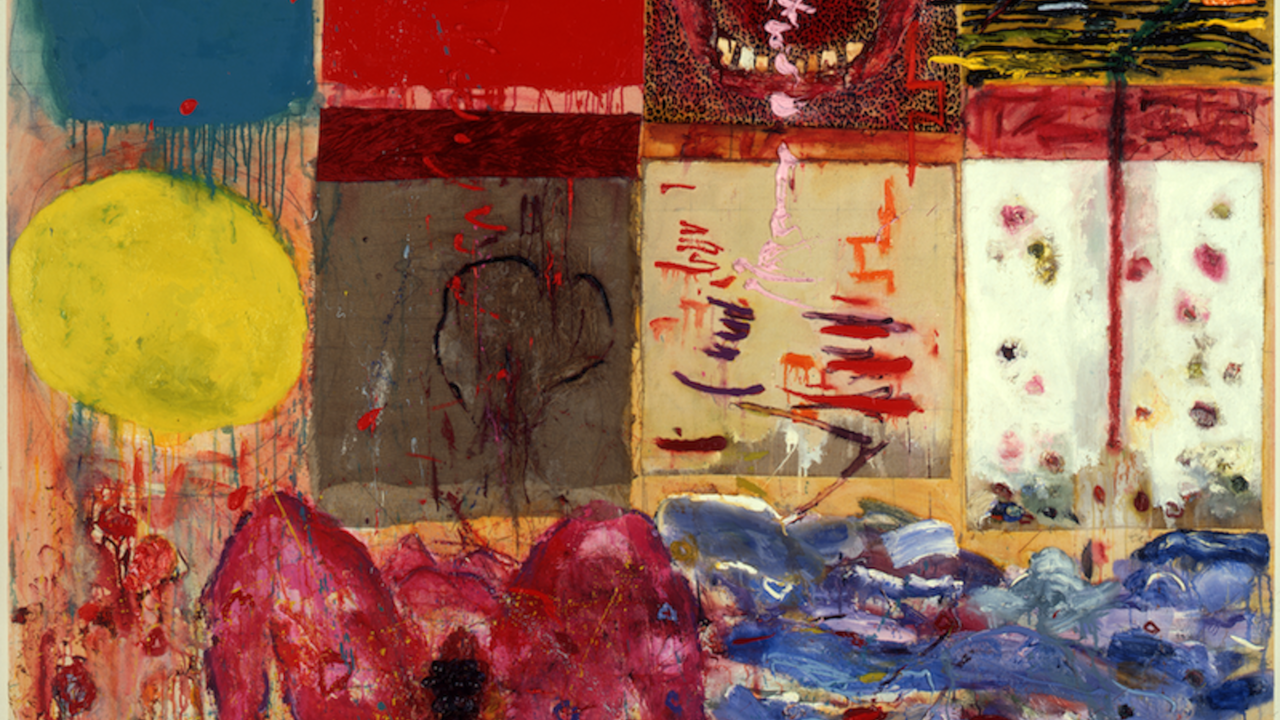Franz Gertsch
Museum Franz Gertsch, Burgdorf, Switzerland
Museum Franz Gertsch, Burgdorf, Switzerland

My first experiences of Franz Gertsch's work, mostly derived from books and the occasional painting in the collections of Swiss museums, always left me totally blown away. So I was ill prepared for the mausoleum-like quality of the Museum Franz Gertsch, with its Albrecht Dürer quotations on the entrance wall and generic Minimalist architecture. The Gertsch paintings with which I was most familiar were the huge, Hyperrealist tableaux from the 1970s, depicting groups of the artist's friends drinking and hanging out, or swarms of children running on a beach in a fluorescent haze. They were like pure flashes of presentness, memory images in a Proustian sense. It was like seeing the past restored as a parallel present, through the almost hallucinatory precision of a photograph enlarged to an enormous scale and the neon-like colours.
This show included one such painting: At Luciano's House, from 1973. Three androgynous youths seem to be getting ready for a party. The figure on the right is Luciano Castelli, transvestite and performer, who would later get his 15 minutes of fame as a Neo-Expressionist painter in the 1980s. He is adjusting his clothes, half-flamboyant and half-thrift store - a leather jacket with a fur collar, a pair of jeans and a patterned shirt. On the floor another youth is kneeling near some records - one of them is the album cover of the Rolling Stones' Sticky Fingers (1971). A girl stands to the left of the picture, head bent with blue eye shadow, almost touching a butterfly that seems to be strangely hovering on top of the painting, like a decal, and which is probably simply glued to the wall of the apartment. It's an image that screams late capitalist Bohemia, and yet what you feel in front of this monumental painting today is more than a simple case of nostalgia. Like a Nan Goldin photograph from the same period, the work is ripe with the auto-erotic power of a subculture representing itself for the first time, but the Photorealist painterly technique imparts a dispassionate objectivity that precludes any form of sentimental identification. Everything in the room is given the same attention, the same treatment: the girl's hair shines with the same gloss as the fur coat, and the make-up on the characters' faces has exactly the same value as their natural features.
The Patti Smith paintings mark a watershed in Gertsch's development, a point of transition from being an artist devoted to an almost sociological depiction of a counter-cultural milieu to one intent on presenting himself as a master in a very traditional sense. Executed over the course of two years, the first four in this cycle of five paintings are based on a series of photographs the artist took of the American rock star before a music and poetry performance in a Cologne gallery in 1977. In each of these you see the singer about to perform, walking around the stage, crouching on the floor with her back to the viewer to tune a guitar, or simply flipping through the book she's going to read from. Her face is slightly distorted, not exactly pretty. In many ways she seems to function as a public, universally identifiable version of Gertsch's earlier subjects. Like Castelli, she is a markedly androgynous figure, and her dress style is pure Glam rock: tight red Lurex trousers, army-style boots and an oversized T-shirt. Through her involvement in the New York punk scene and her frequent references to Baudelaire or Rimbaud, this is a woman who has self-consciously packaged herself as a bohemian icon.
The emphasis in these first four paintings in the series is focused less on the singer's body as on the way it is produced through the glittering technology of the performance: the microphones, cables and amplifiers. With Patti Smith V (1979), however, the last painting in the cycle, the focus is clearly different. Painted after a picture of the singer taken during a visit to Gertsch's studio, it portrays Smith alone on a neutral cream background. The image is cropped tightly around her figure - there is nothing in her sober black dress to distract attention from her face and hands.
While most critics see this evolution as a positive move away from artifice and narration, for me it marks Gertsch's downfall, the point where his work relinquished its criticality. From here on, the painter moved on to increasingly rarefied depictions of the human face (that of his daughter, in two Renaissance-inspired paintings completed in 1998 and 2000), and of landscape elements such as close-ups of grass, water and rocky fields. In the light of these later works it is hard not to see the Patti Smith paintings not only as Gertsch's last truly great works, but also as a kind of farewell to the anti-bourgeois ideals of the 1960s and 1970s.























